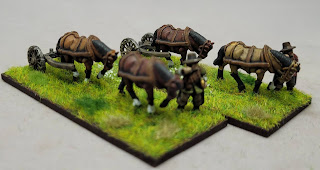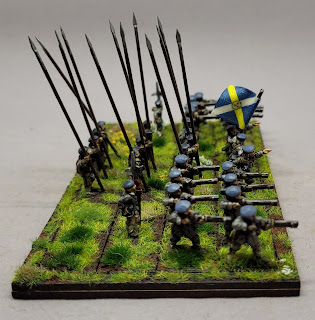Kent Trained Bands
Kent was a deeply divided county in the Civil War; although nominally under Parliamentary control, there were Royalist risings in Tonbridge and Sevenoaks in 1643, Canterbury in 1647 and a major uprising in 1648, culminating in the Battle of Maidstone.
St Augustine Lathe – under Colonel Sir George Sondes at the start of the war. Sondes was a Royalist and was later imprisoned and lost much of his estate. After the restoration he was made Earl of Faversham. His Colonel of Horse, Sir Richard Hardress was initially on the Parliamentarian side and was at the Siege of Arundel, but later he joined the Royalist uprising in 1648. In contrast, the Volunteers were used to put down an uprising in Canterbury in 1647 and one company of the auxiliaries was in garrison in Canterbury in 1648.
Scraye Lathe – under the elderly Sir Edward Hales at the start of the war, the trained band took part in the Siege of Arundel, as did the volunteers under Colonel William Herbert and the Horse. Hale’s grandson was a Royalist and raised a regiment of Horse for the 1648 uprising.
Shepway Lathe – under Colonel Sir Humphrey Hales. The Horse at least were at the siege of Arundel.
Sutton at Hone Lathe – under Sir Francis Walsingham in 1639 and later under Colonel Thomas Blunt. The Volunteers under Colonel Sir William Brooke were at the Relief of Gloucester and later the First Newbury, as well as the Siege of Arundel. The Horse were initially under Sir John Rivers, though he joined the Royalist uprising at Tonbridge in 1643
The Trained Bands however remained firmly in Parliamentary control, even in 1648, and formed part of the Southern Association under Sir William Waller.
 |
The Bands were organised by "lathes" or areas, a system unique to Kent believed to date to the Kingdom of the Kentish (which existed until the 9th Century).
There were five Lathes:
Sutton at Hone – adjoining London, including Blackheath, Bromley, Dartford and Westerham
Aylesford – from Chatham and Rochester in the north to Tonbridge in the south, with the county town, Maidstone.
Scraye – a more rural area, though including Ashford and Faversham.
St Augustines – Canterbury, and the north Kent ports of Dover, Deal and Sandwich
Shepway – the south Kent ports of Folkestone, Hythe and Romney.
Each Lathe was expected to recruit a militia, as well as a regiment of auxiliaries, a regiment of volunteers and a regiment of horse.
Aylesford – from Chatham and Rochester in the north to Tonbridge in the south, with the county town, Maidstone.
Scraye – a more rural area, though including Ashford and Faversham.
St Augustines – Canterbury, and the north Kent ports of Dover, Deal and Sandwich
Shepway – the south Kent ports of Folkestone, Hythe and Romney.
Each Lathe was expected to recruit a militia, as well as a regiment of auxiliaries, a regiment of volunteers and a regiment of horse.
In 1639 the Lathes contributed 700 men for the Bishops War - although their armoury left a lot to be desired as many of the muskets didn’t work and the pikes were rotten.
During the Civil Wars the Kent Trained Band was under Parliament's control and fought as follows:
Aylesford Lathe – initially under Colonel Sir Francis Barnham then Colonel Mark Dixwell; fighting at the Siege Arundel. The Volunteers under Colonel George Newman are recorded at the Second Newbury. The Horse may have worn blue as they are recorded in 1599 being issued with “cassocks” of this colour.
During the Civil Wars the Kent Trained Band was under Parliament's control and fought as follows:
Aylesford Lathe – initially under Colonel Sir Francis Barnham then Colonel Mark Dixwell; fighting at the Siege Arundel. The Volunteers under Colonel George Newman are recorded at the Second Newbury. The Horse may have worn blue as they are recorded in 1599 being issued with “cassocks” of this colour.
St Augustine Lathe – under Colonel Sir George Sondes at the start of the war. Sondes was a Royalist and was later imprisoned and lost much of his estate. After the restoration he was made Earl of Faversham. His Colonel of Horse, Sir Richard Hardress was initially on the Parliamentarian side and was at the Siege of Arundel, but later he joined the Royalist uprising in 1648. In contrast, the Volunteers were used to put down an uprising in Canterbury in 1647 and one company of the auxiliaries was in garrison in Canterbury in 1648.
Scraye Lathe – under the elderly Sir Edward Hales at the start of the war, the trained band took part in the Siege of Arundel, as did the volunteers under Colonel William Herbert and the Horse. Hale’s grandson was a Royalist and raised a regiment of Horse for the 1648 uprising.
Shepway Lathe – under Colonel Sir Humphrey Hales. The Horse at least were at the siege of Arundel.
Sutton at Hone Lathe – under Sir Francis Walsingham in 1639 and later under Colonel Thomas Blunt. The Volunteers under Colonel Sir William Brooke were at the Relief of Gloucester and later the First Newbury, as well as the Siege of Arundel. The Horse were initially under Sir John Rivers, though he joined the Royalist uprising at Tonbridge in 1643
For more information on the cornets carried by the Kentish Horse see here.
The flag carried by my Kent Trained Band is conjectural, although rooted in the knowledge that they carried blue and white striped flags with a central coat of arms (National Archives SP 28/130). Unfortunately, we don't know how many stripes, or which coat of arms.
The flag carried by my Kent Trained Band is conjectural, although rooted in the knowledge that they carried blue and white striped flags with a central coat of arms (National Archives SP 28/130). Unfortunately, we don't know how many stripes, or which coat of arms.
If you enjoyed reading this, or any of the other posts, please consider supporting the blog.
Thanks.













Fascinating. I used to live in Folkestone many years ago and often wondered why the area was run by ‘Shepway District Council’.
ReplyDeleteI think something like the Gillingham FC badge (minus the club name of course) would make a good flag for the Aylesford Lathe.
In fact I’ve lived in 3 of the 5 Lathes now I think about it.
ReplyDeleteYou can't stop there now. You've got to go for a full house.
DeleteLike to see how you explain your reason for moving...
Avoiding the Lathe law enforcement for failing to turn up to trained band muster. Nah, much more prosaic.
DeleteSt Augustines: uni
Shepway: first ‘proper’ job after uni
Sutton at Hone: first job in That London
Doubt I’ll bag the other two as I like SW London too much. Next move is either SW, North or a box.
Well done, splendid troops...and impressive pikes!
ReplyDeleteThanks Phil. The pikes are slightly oversized, makes them look a bit more 'pikey'
Delete